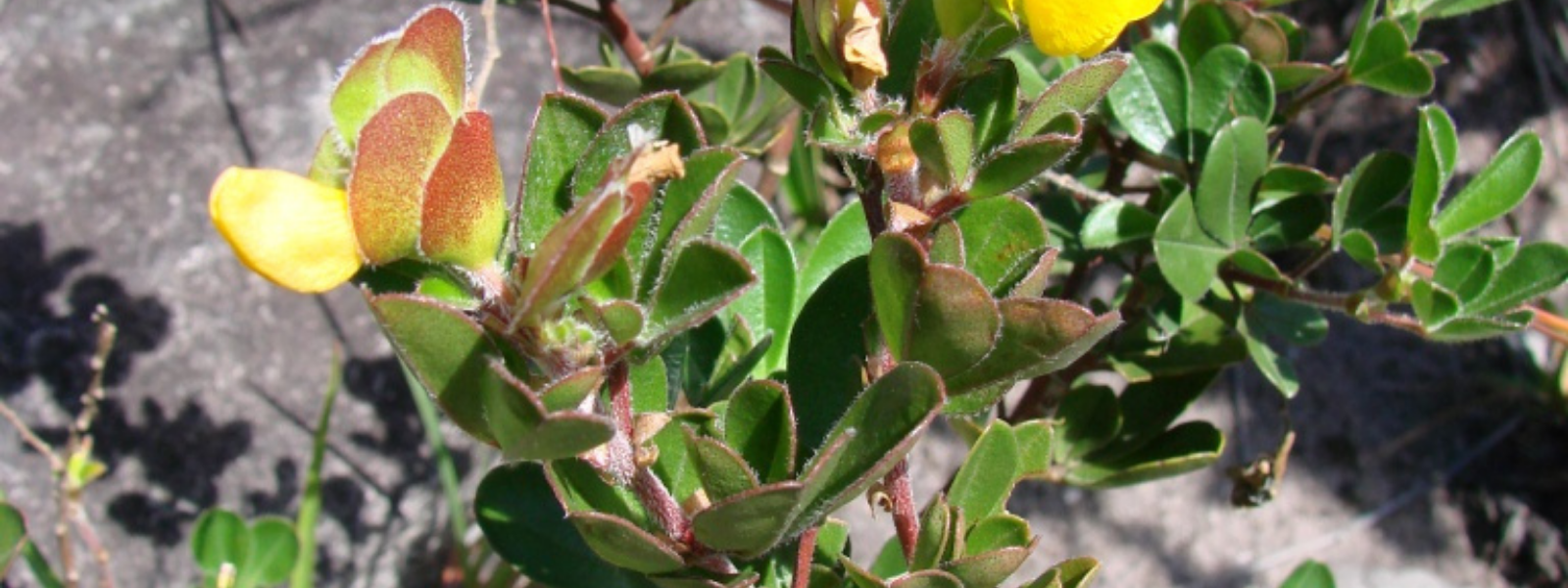
Common Name
Zornia
Scientific Name
Zornia spp.
Family
Fabaceae
Lifecycle
Perennial
Seasons of Growth
Year-round
Key Distinguishing Feature
Low-growing herb with trifoliate leaves
Growth Form: Zornia species vary in growth form, but they are generally low-growing herbs, subshrubs, or small shrubs. Some species may have a trailing or creeping growth habit.
Leaves: The leaves of Zornia species are typically compound with multiple leaflets arranged along a central stem or rachis. Leaflets can vary in shape and size depending on the species.
Flowers: The flowers are often small and pea-like, typically arranged in clusters or spikes.
Fruit: After flowering, Zornia species produce pods or legumes that contain seeds.
Ecological Impact:
- Zornia species are found in various regions, including tropical and subtropical areas. Some species are native to specific regions, while others have naturalised in different parts of the world.
- The ecological impact of Zornia species varies depending on the specific species and its range. Some species may play a role in natural ecosystems, while others may be considered invasive in certain regions.
Control Methods:
- Control measures for Zornia species depend on whether they are native or invasive in a particular region.
- In cases where Zornia species are considered invasive and negatively impact native ecosystems, control methods may include manual removal, mowing, or herbicide application.
- The management approach for Zornia is context-dependent and should be guided by local regulations and conservation goals.
Mechanical Control:
- Manual Removal: For small infestations, manually removing Zornia plants by hand-pulling or digging them up, including their root systems, can be effective. Ensure proper disposal to prevent regrowth.
- Cutting: Regular cutting or mowing can help reduce the growth and seed production of Zornia plants. Frequent cutting before seed production can weaken the plants.
Cultural Control:
Promote Native Vegetation: Encourage the growth of native vegetation that can outcompete Zornia. Enhancing plant diversity and maintaining healthy ecosystems can help prevent its spread.
Chemical Control:
Herbicides: In cases of larger or persistent Zornia infestations, herbicides may be used. Selective herbicides designed for broadleaf weed control should be applied following the manufacturer's instructions and safety guidelines. Herbicide use should be conducted with care to minimize damage to non-target plants.
Integrated Weed Management (IWM):
Implement an integrated approach that combines multiple control methods to maximize effectiveness and minimize the risk of herbicide resistance.
Zornia is a diverse genus of plants with various species found in different regions.
Control measures are typically applied when specific species of Zornia are invasive and pose a threat to native ecosystems or agricultural areas. Local environmental and agricultural agencies can provide guidance on the management of invasive Zornia species.




